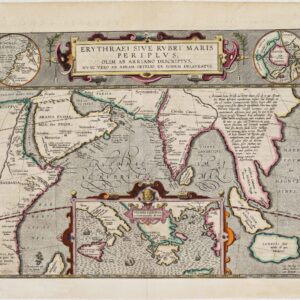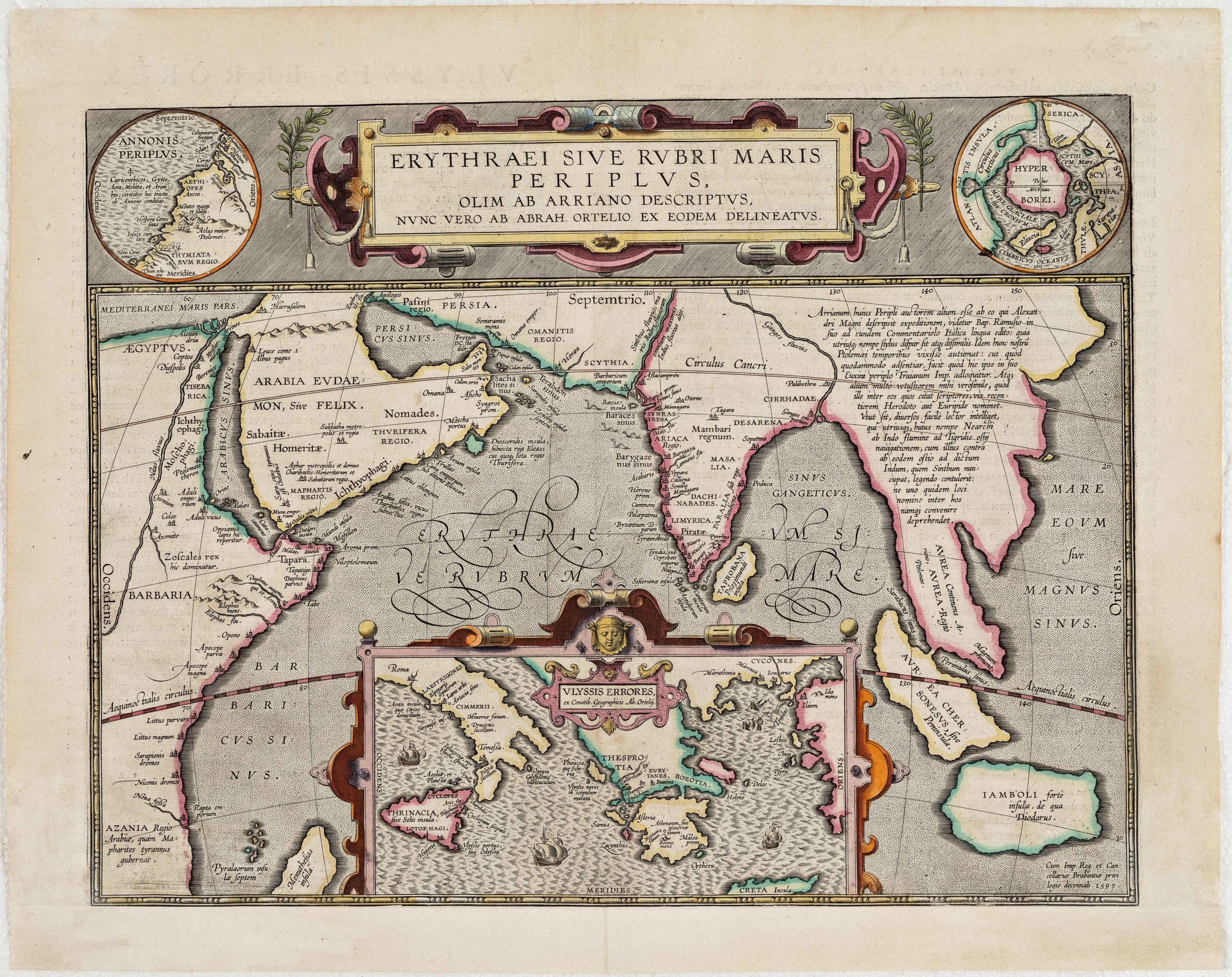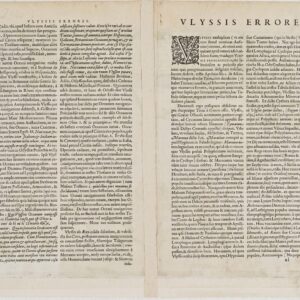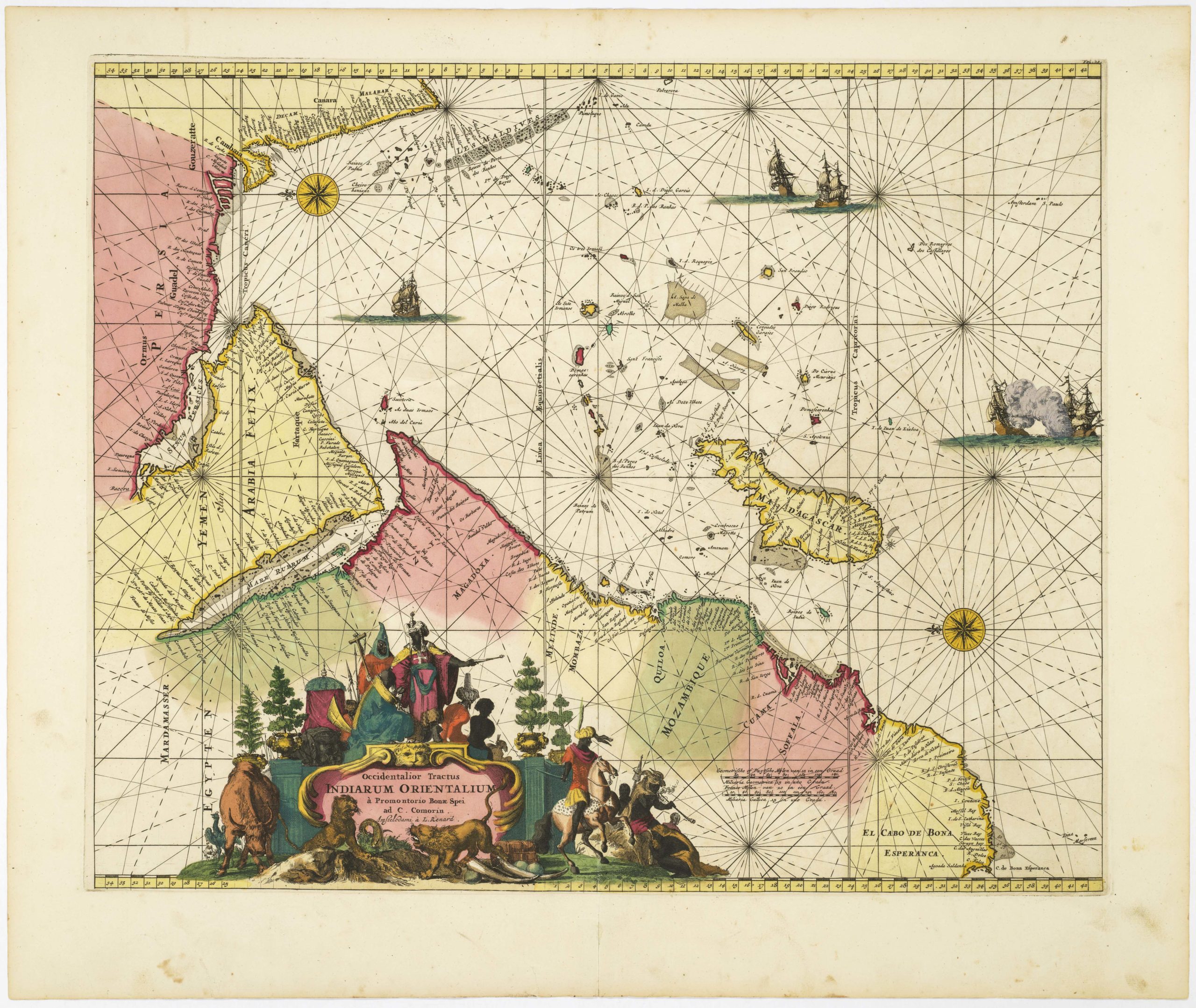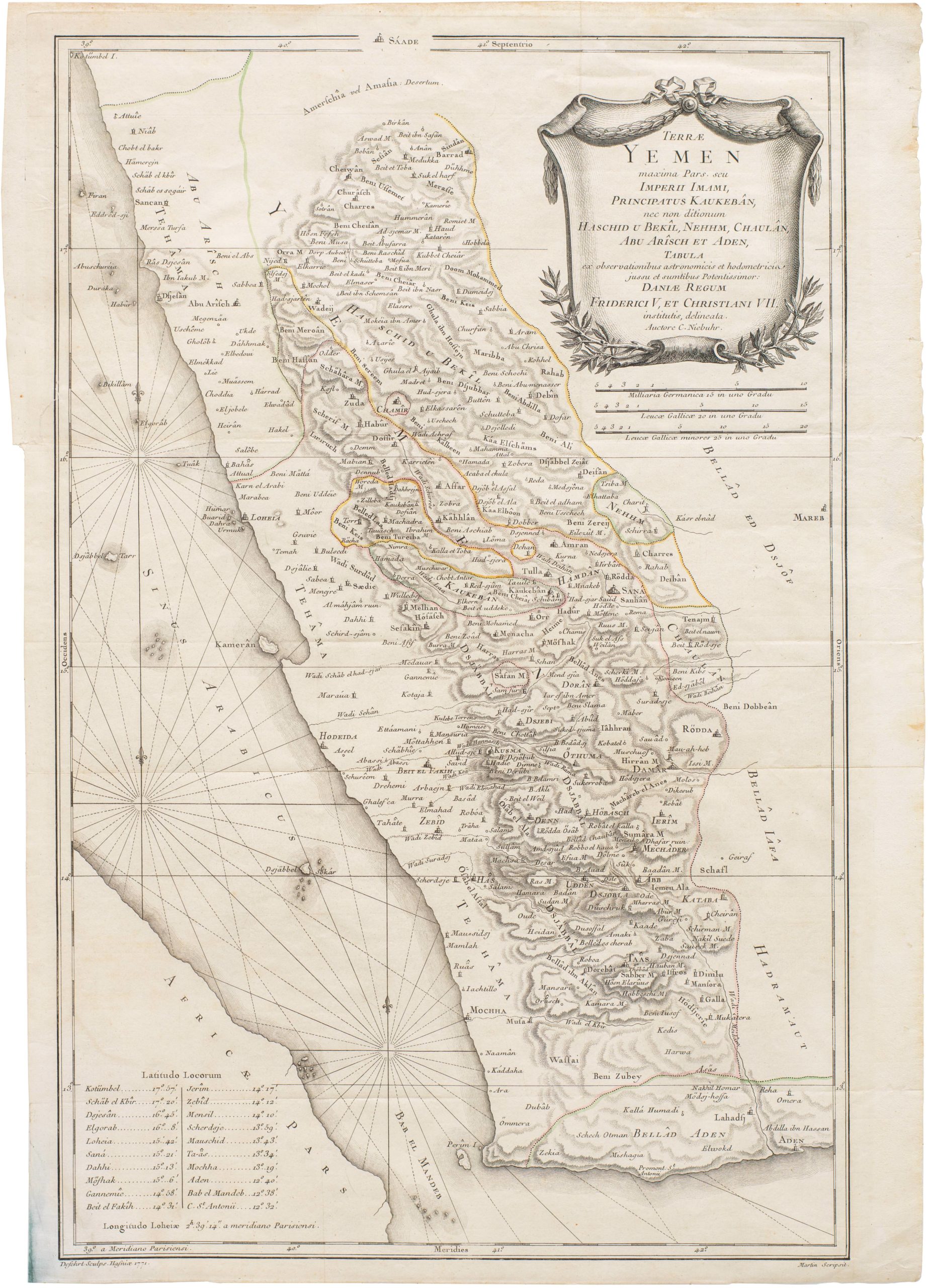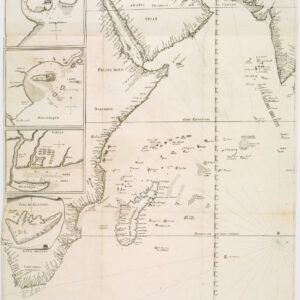Decorative Dutch map of Arabia.
Arabiae Felicis, Petrae ae et Desertae Nova et Accurata Delineatio
Out of stock
Description
Uncommon map of the Arabian Peninsula published during a period of expanding European cartographic knowledge driven by increased trade with the Orient. The coastlines are fairly well represented and the interior contains details of the navigable rivers, with locations of inland towns, largely speculative.
Tibbetts concludes that this map is based on a Willem Blaeu map of Arabia that appeared in his atlas in 1662, but was likely made earlier. Blaeu added important new information, including the kingdoms of Zibit, Aden, Herit, and Faratach. But cartographic errors persist, most notably the depiction of Stag Lago, the fanciful lake depicted on maps since the 15th century, which has been moved towards the coast and become a bay with an outlet to the Indian Ocean.
The map is among the most decorative maps of Arabia available to collectors, with the interior filled with lions, camels and elephants and a sea monster guarding the Fretum Babelmandel. It is adorned with two cartouches featuring putti and depictions of the inhabitants of the region.
Verso Text: Blank
Cartographer(s):
Johannes Janssonius (1588 – 1664; born Jan Janszoon, also Jan Jansson) was a Dutch cartographer and publisher who lived and worked in Amsterdam in the 17th century. Janssonius was born in Arnhem, the son of Jan Janszoon the Elder, a publisher and bookseller. In 1612 he married Elisabeth de Hondt, the daughter of Jodocus Hondius. He produced his first maps in 1616 of France and Italy.
In the 1630s, Janssonius formed a partnership with his brother-in-law Henricus Hondius; they published atlases as Mercator/Hondius/Janssonius. Under the leadership of Janssonius, the Hondius Atlas was steadily enlarged. After Janssonius’s death, the publishing company was continued by his son-in-law, Johannes van Waesbergen. The London bookseller Moses Pitt attempted publication of the Atlas Major in English but ran out of resources after the fourth volume in 1683.
Condition Description
A little toning and light offsetting; a few short marginal tears; very good.
References
Tibbetts, G. R. Arabia in Early Maps. Ney York, NY: Oleander Maps, 1978.
